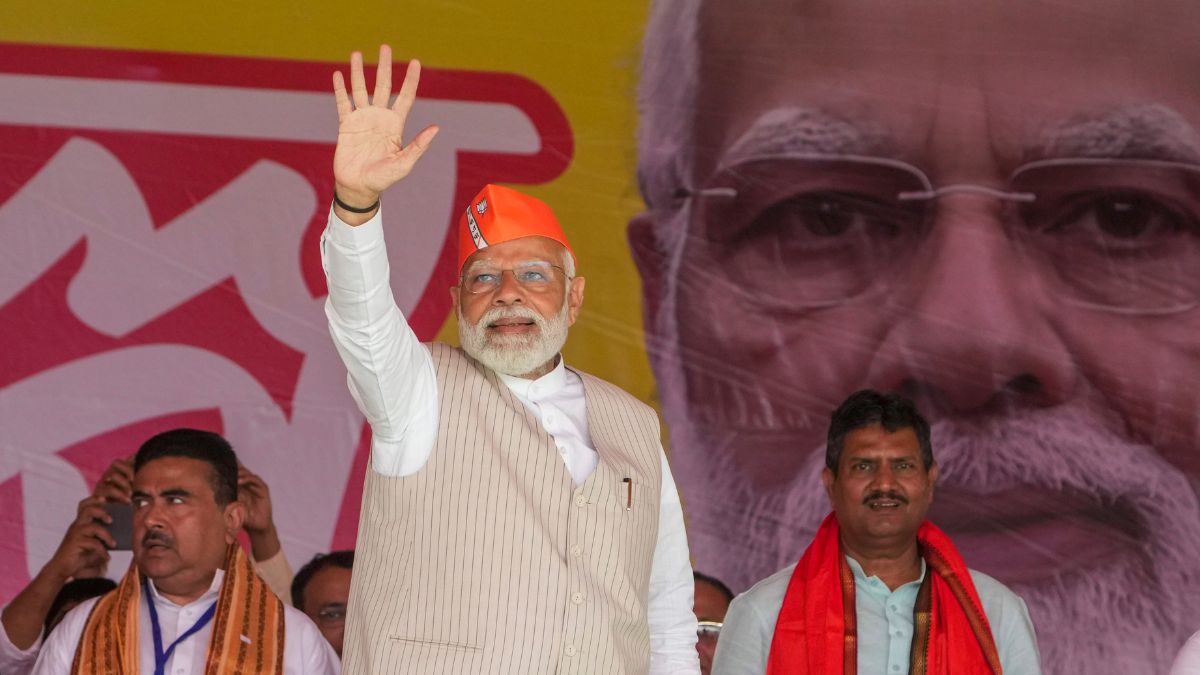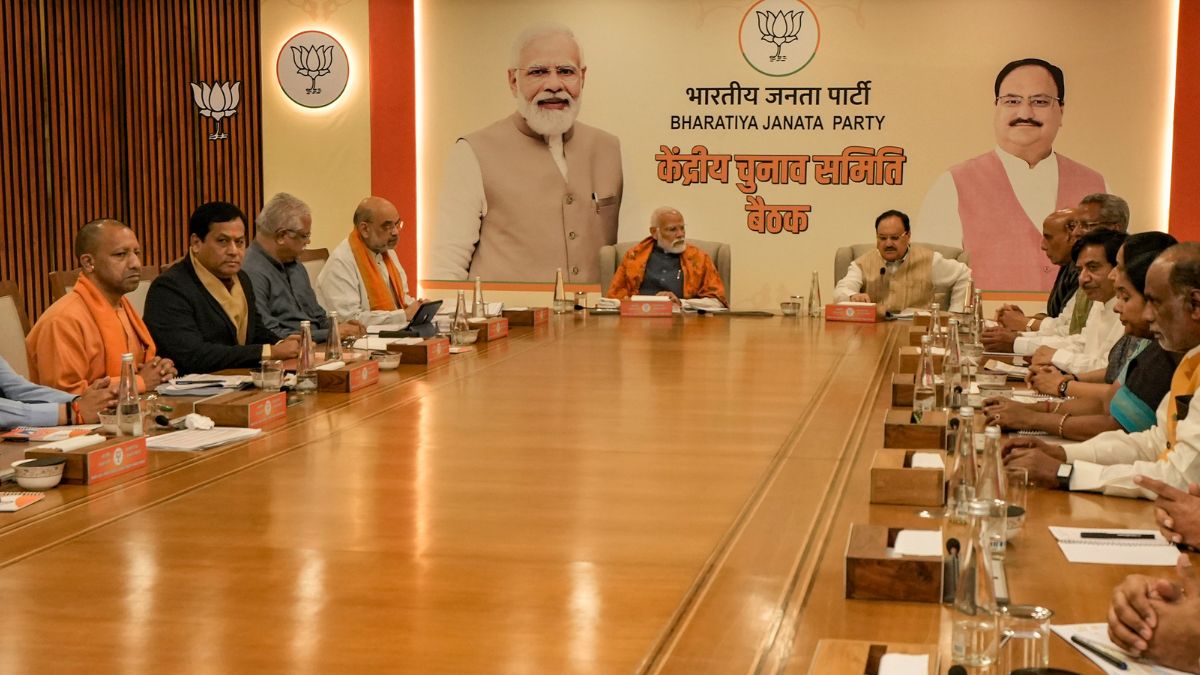For Narendra Modi’s critics the timing could not have been better.
“A pope champions the big bang theory and evolution, a prime minister champions ancient plastic surgery and genetic science,” tweets @DeathEndsFun.
But they could not have been more different. While Pope Francis was behaving as a modern pontiff of scientific temper, the Indian prime minister made headlines for sounding more like Dinanath Batra-II.
“If we think a little more, we realise that Mahabharat says Karna was not born from his mother’s womb. This means that genetic science was present at that time. That is why Karna could be born outside his mother’s womb,” he declared , and then doubled down with his theory of Ganesha’s head. “We worship Lord Ganesh. There must have been some plastic surgeon at that time who got an elephant’s head on the body of a human being and began the practice of plastic surgery.”
He actually made, as @VidyaKrishnan notes, identical remarks at a Global Healthcare Summit in Ahmedabad in January 2014. But he was not PM then and few noticed or took them seriously.
Modi might well have been joking but now the remark has became a gotcha moment for a man who wants to project himself as Mr. Development. “’Ganesha had plastic surgery done’. Is Narendra Modi body-shaming a Hindu god?” quipped @AListRap.
In fact, the PM did no one any favours, including his own people. The clumsy rush to claim ancient credit suggests that we are a civilization of fools who managed to misplace pretty much every scrap of valuable ancient knowledge – from plastic surgery to aeroplanes. Forget the Great Flood, in this version of history, we apparently suffered a bout of the Great Amnesia that swept our cultural memory clean.
“I’m sure the prime minister doesn’t take this seriously, but if he does I would be worried,” says Subhas Lakhotia, a Banaras Hindu University biologist researching the scientific principles underlying the Ayurveda according to The Telegraph . He says it’s puzzling that Modi tried to dress up a magical story out of mythology as science when he could have talked about the sixth century surgeon Sushruta’s well-documented surgical practices.
Modi’s great charisma relies greatly on his ability to appeal to Indian pride and self-esteem. His Ganesha comment is clearly part of that strategy. At a time when we are accustomed to think that all advances, especially scientific ones came to us via the West, Modi wants to remind his audience that we do not come from nothing. That was why Mangalyaan struck such an emotive chord in India. And that’s also why the New York Times Mangalyaan cartoon of the turbaned man with cow at the door of the Elite Space Club made Indians bristle.
But this pride can come across as braggadocio as well – anything you can do, India does better (and did it first) like an old sketch from the British comedy series Goodness Gracious Me . Aeroplanes? Lord Rama flew them. Stem cell research ? That’s how the hundred Kauravas were born outside Gandhari’s womb.
However, just sniggering about Modi or a Batra, or Ganesha as the first plastic surgery patient ignores the other elephant in the room.
India is a rich and ancient civilization and much of what it has produced has not received due recognition as world achievements because the timeline of Civilization as defined by the West has tended to start from the Renaissance and the Enlightenment. Kalidasa might have written exquisite works in the 5th century AD but they do not receive their due place in the annals of world literature because at that time Europe was not focused on literature and the arts - the Visigoths were ransacking Rome and Attila the Hun’s sons were squabbling over his empire.
Then the Renaissance came along and produced a galaxy of superstars who have become part of the pantheon of the best and brightest – Leonardo da Vinci, Michelangelo, Machiavelli, Raphael, Galileo, Kepler, Martin Luther. They drew from their own traditions, Latin and Greek. Gutenberg’s printing press allowed these ideas to spread far and wider, faster than anything that had come before. India, indeed the rest of the world, was nowhere in the picture.
The Enlightenment only exacerbated the erasure. As it ushered in the Age of Reason, it also privileged scientific thought and thus anointed a certain way of looking at the world and human achievement as the correct way.
Soon India was under colonial rule dressed up – more shamefully – as a white man’s burden to civilize natives who burned widows and sacrificed humans. Thomas Babington Macaulay who detested almost everything Indian, from its food to its people to its climate, epitomized that shaming when he infamously said “a single shelf of a good European library was worth the whole native literature of India and Arabia.” If the so-called Macaulay-putras are derided for still being in Macaulay’s West-is-best thrall, the grandiose excess of cultural warriors like Dinanath Batra reveals their own colonial baggage – sounding more like the delusional native desperate to shrug off that shame and outdo his former master at his own game.
It also does not help that we have a different way of recording achievement. No one can name the artist who painted the frescos of Ajanta or sculpted the temples of Ellora. These nameless artists will never feature in a Wikipedia style list of the 20 Greatest Artists of the World, unlike a Michelangelo. In a world obsessed with singular achievement, where we need to name names, communal output will always struggle to get due respect. So we are stuck with reiterating the few names we have – a Valmiki, an Aryabhatta, a Patanjali or instead resort to rewriting our mythology as Modi did at the Reliance Foundation Hospital.
It is perfectly acceptable and even needed to challenge a myopic worldview, to expand the lens, not out of some chest-thumping superiority complex, or to denigrate the Renaissance and Enlightenment, but because human civilization is the accumulation of the endeavours of many minds of all kinds. Just because their existence is not acknowledged until the West deigns to do so does not mean they did not exist. America existed as did its history and civilisation long before Christopher Columbus “discovered” it.
It’s not just India. Almost every colonised civilization – Indian, Arab, Inca - has had its past denigrated and devalued. Its achievements have been carted off like the Koh-i-noor to become the crown jewel of the colonizer. Colonization is always about erasure and appropriation. There’s no point whining about it. But when the West turns around and wants to patent and copyright the healing properties of turmeric and neem, the anger in India is completely justified.
However, it is easier to reclaim the past – or even rewrite it – than build for the future. We may not have played a starring role in the history of modern post-Enlightenment science, but it doesn’t mean we did not have other achievements or that we cannot shape the centuries of knowledge still to be discovered. We name our satellite after Aryabhatta but are we investing in pure sciences and research so that there will be a 21st century Indian scientist whose name can be on a satellite a century from now? “Basking in what we had done, even if true, doesn’t take us far today,” Lakhotia at BHU tells The Telegraph.
It matters little if Ganesha’s head was stuck on by plastic surgery, Fevicol or purely the power of imagination. The Golden Bird the PM likes to talk about will only fly if our future contributions to the sum of human knowledge amount to more than empty boasts about the mythological past.


)




)
)
)
)
)
)
)
)